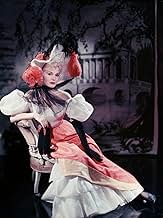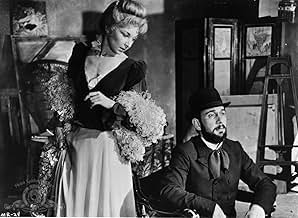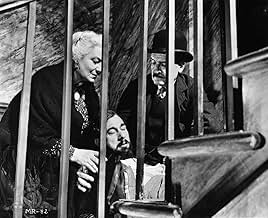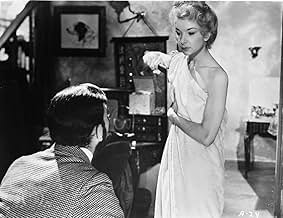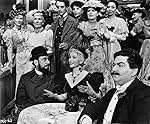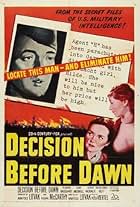Fictional account of French artist Henri de Toulouse-Lautrec.Fictional account of French artist Henri de Toulouse-Lautrec.Fictional account of French artist Henri de Toulouse-Lautrec.
- Won 2 Oscars
- 6 wins & 10 nominations total
- Director
- Writers
- All cast & crew
- Production, box office & more at IMDbPro
Storyline
Did you know
- TriviaJosé Ferrer was transformed into the short artist Toulouse-Lautrec by the use of camera angles, make-up, costume, concealed pits and platforms, and short body doubles. Ferrer also used a set of special knee pads of his own design which allowed him to walk on his knees with his lower legs strapped to his upper body. He suffered extreme pain and could only use them for short periods of time. The cane he used in most of his scenes was of absolute necessity. This fact was covered in a LIFE Magazine story in 1952.
- GoofsWhen Henri Lautrec arrives at the gallery for the showing of his pictures, as he 'walks' in, his shadow on the ground clearly shows José Ferrer's legs tucked behind him as he walks (on his knees).
- Quotes
Jane Avril: Henri, my dear, we just heard you were dying. We simply had to say good-bye.
- Crazy creditsThe opening credits play over some of Marcel Vertès's pastiche Lautrec drawings; the photography credits are superimposed over a picture of a photographer, and the music credits over a man playing piano.
- ConnectionsFeatured in The Partridge Family: This Is My Song (1970)
- SoundtracksWhere is your Heart
(Moulin Rouge)
Music by Georges Auric
French lyrics by Jacques Larue
English lyrics by William Engvick
Performed by Muriel Smith
Featured review
This romanticized treatment of the life of artist Henri Toulouse-Lautrec is literally one of the most colorful films ever made
All the hues and colors in the palette go whizzing by in the Parisian streets, country homes, and cabarets of the late 19th century Can-Can girls in reds and blues, against a misty brown-gold backdrop, flourish their silks and feathers in the face and soul of dwarfed painter who could recreate their essence on canvas, yet never possess them physically
It is the tragedy of Lautrec's (Jose Ferrer) life which bounces around the rainbow framework The cruel prostitute (Colette Marchand) to whom he gave his love and the young woman (Suzanne Flon) who befriended the artist motivate the narrative, from the crippling-fall in the home of his father to the death-fall in the dirty-looking saloon
Brilliant work by Ferrer, fine support by Marchand and Flon, and the gaiety of Zsa Zsa Gabor cap the film
All the hues and colors in the palette go whizzing by in the Parisian streets, country homes, and cabarets of the late 19th century Can-Can girls in reds and blues, against a misty brown-gold backdrop, flourish their silks and feathers in the face and soul of dwarfed painter who could recreate their essence on canvas, yet never possess them physically
It is the tragedy of Lautrec's (Jose Ferrer) life which bounces around the rainbow framework The cruel prostitute (Colette Marchand) to whom he gave his love and the young woman (Suzanne Flon) who befriended the artist motivate the narrative, from the crippling-fall in the home of his father to the death-fall in the dirty-looking saloon
Brilliant work by Ferrer, fine support by Marchand and Flon, and the gaiety of Zsa Zsa Gabor cap the film
- Nazi_Fighter_David
- Apr 5, 2008
- Permalink
- How long is Moulin Rouge?Powered by Alexa
Details
- Release date
- Country of origin
- Languages
- Also known as
- John Huston's Production Moulin Rouge
- Filming locations
- Production companies
- See more company credits at IMDbPro
Box office
- Budget
- $1,500,000 (estimated)
- Gross worldwide
- $3,188
- Runtime1 hour 59 minutes
- Aspect ratio
- 1.37 : 1
Contribute to this page
Suggest an edit or add missing content


